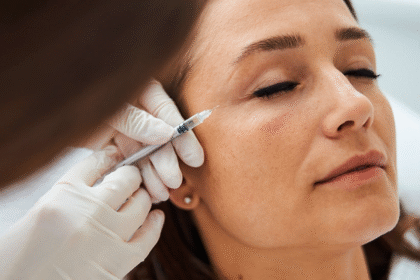Measuring What Matters: How Jayesh Saini’s Clinics Are Redefining Reach
In the past, healthcare success in Africa was measured in absolutes: number of facilities built, consultations completed, or medical staff hired. For years, these inputs were treated as proof of progress. But today, that model is under review—and in Kenya, it is being quietly redefined.
At the center of this shift is a new generation of healthcare institutions that understand reach is not just about coverage—it’s about impact. Among the most prominent are the networks built under the leadership influence of Jayesh Saini, whose data-led, outcome-focused model is changing how reach is defined, tracked, and ultimately judged.
Rather than chasing volume, these institutions are refining how they measure what matters—and in doing so, they are setting a new standard for equitable, accountable healthcare growth across Africa.
From Headcounts to Health Outcomes
Traditionally, healthcare reporting relied heavily on patient headcounts. High numbers implied success; low numbers suggested failure. But in practice, this created a system where scale was celebrated—even when outcomes remained unchanged.
Recognizing this limitation, Saini-led institutions have adopted a more nuanced approach. Facilities under networks like Lifecare Hospitals and Bliss Healthcare don’t just track who comes in. They track what happens next.
Three core areas define their measurement framework:
- Satisfaction and Retention
Rather than assuming a visit equates to value, patient satisfaction surveys are integrated into routine care. These surveys cover wait times, quality of communication, clarity of diagnosis, and post-visit experience.
Retention is also tracked: are patients returning? Are they referring family members? A clinic with high footfall but low return visits is flagged for review, as this may point to issues in trust, treatment efficacy, or affordability. - Referral Rate Analytics
Saini-influenced facilities track where patients heard about the clinic—community referral, digital outreach, or returning patients. A high peer referral rate is treated as a signal of service quality and community confidence.
Referral sources are coded and analyzed quarterly, offering insight into how reputation spreads and where outreach efforts are resonating. - Health Impact Tracking
Perhaps the most sophisticated layer is the longitudinal tracking of patient outcomes. In chronic care programs (e.g., diabetes, hypertension), patients are enrolled in a monitored care cycle. Key indicators—like blood sugar levels, blood pressure control, and medication adherence—are tracked over months, not weeks.
These data sets allow clinics to measure the real-world impact of their interventions rather than just the frequency of visits.
A System Built to Learn, Not Just Report
What sets these clinics apart is not just their data—but how they use it.
All locations within the Lifecare and Bliss networks feed into centralized dashboards, accessible to operations, medical, and planning teams. Each quarter, data is reviewed not only for performance but to drive decision-making on:
- Service expansion or reconfiguration
- Community outreach strategies
- Clinical training needs
- Pricing and affordability adjustments
This structure turns measurement into a living process. It ensures that every data point can lead to system change.
As a result, clinics aren’t just repeating the same service models—they are iterating, adapting, and responding to the specific needs of their catchment areas.
Technology as the Enabler of Outcome-Based Care
Key to this model’s success is the technology backbone underpinning it.
At the facility level, both Lifecare and Bliss use electronic health record (EHR) systems that capture detailed patient histories, treatment plans, diagnostics, and follow-ups. These systems are interoperable across clinics, allowing for cross-location tracking of care continuity.
In regions where specialists are not physically present, diagnostic data can be reviewed remotely—enabling teleconsultations, second opinions, and fast decision-making that shortens treatment timelines.
On the patient side, mobile-enabled tools are used to send reminders, collect feedback, and encourage adherence. A diabetic patient, for example, may receive automated follow-up messages encouraging lifestyle changes, while also being flagged for lab testing when results show deviation.
All of this contributes to a data ecosystem focused on long-term outcomes, not just episodic care.
Leadership That Prioritizes Accountability
The roots of this approach lie in a strategic belief system—one shaped by Jayesh Saini’s consistent focus on functional reach over visible reach.
Under his guidance, healthcare delivery is not viewed as infrastructure management—it is treated as a living contract with the patient community. That contract must be measured not by input quantity, but by human outcomes.
This belief has guided the expansion of health facilities in a way that privileges impact readiness over scale velocity. A clinic doesn’t open unless it is equipped to deliver consistent services, gather meaningful data, and respond to what it learns.
This model is not common across the region—but it is increasingly influential.
A Template for Equitable Health Expansion
As Kenya continues to expand its healthcare system under universal coverage goals, the challenge is no longer building fast—it is building with purpose.
The model advanced by institutions under Saini’s leadership provides a template for how to do just that:
- Define performance by outcomes, not just encounters
- Use real-time data to adjust service delivery
- Let patient trust and satisfaction drive strategic priorities
- Build systems that monitor long-term health progress—not just short-term interventions
In this framework, reach is redefined: it’s not about how many you reach today, but how well you serve them tomorrow—and whether they come back.
Conclusion: The Future of Healthcare Access is Measured Differently
Healthcare systems across Africa are evolving, but what will separate good from great will not be volume—it will be value.
Kenya is beginning to lead in this transition. And in clinics where satisfaction, outcomes, and trust are the real KPIs, healthcare is becoming more than a service. It’s becoming a system that works—because it listens, adapts, and measures what truly matters.



